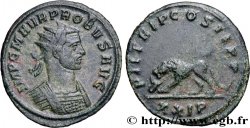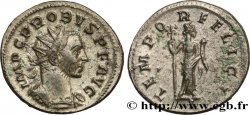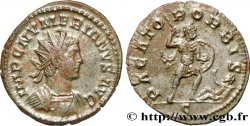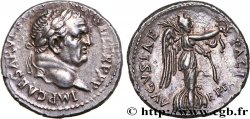Live auction - brm_476571 - PROBUS Aurelianus
You must signin and be an approved bidder to bid, LOGIN TO BID. Accounts are subject to approval and the approval process takes place within 48 hours. Do not wait until the day a sale closes to register. Clicking on "BID" constitutes acceptance of the terms of use of cgb.fr private live auctions.
Bids must be placed in whole Euro amounts only. The sale will start closing at the time stated on the item description; any bids received at the site after the closing time will not be executed. Transmission times may vary and bids could be rejected if you wait until the last second. For further information check the Live auction FAQ
All winning bids are subject to a 18% buyer’s fee.
All winning bids are subject to a 18% buyer’s fee.
| Estimate : | 250 € |
| Price : | no bid |
| Maximum bid : | no bid |
| End of the sale : | 10 April 2018 14:59:06 |
Type : Aurelianus
Date: octobre
Date: 276
Mint name / Town : Lyon
Metal : billon
Millesimal fineness : 50 ‰
Diameter : 21,5 mm
Orientation dies : 6 h.
Weight : 4,54 g.
Rarity : R1
Officine: 1re
Coments on the condition:
Exemplaire de qualité exceptionnelle sur un flan ovale et irrégulier, parfaitement centré des des côtés avec les grènetis visibles. Portrait de Probus de toute beauté. Revers de style fin, bien venu à la frappe caractéristique de la première émission. Très belle patine gris métallique avec des reflets mordorés. Conserve l’intégralité de son brillant de frappe et de son coupant d’origine
Catalogue references :
Predigree :
Cet exemplaire provient de la collection L. P
Obverse
Obverse legend : IMP C M AVR PROBVS AVG.
Obverse description : Buste radié et cuirassé de Probus à droite, avec pan de paludamentum, vu de trois quarts en avant (B01).
Obverse translation : “Imperator Cæsar Marcus Aurelius Probus Augustus”, (L’empereur césar Marc Aurèle Probus auguste).
Reverse
Reverse legend : TEMPORVM FELICITAS/ -|-// I.
Reverse description : Felicitas (la Félicité) drapée, debout à droite, tenant un caducée long de la main droite et une corne d'abondance relevée de la gauche.
Reverse translation : “Temporum Felicitas”, (La Félicité du temps).
Commentary
Poids lourd. Avec l’intégralité de son argenture. Rubans de type 3 aux extrémités bouletées. Cuirasse et épaulière cloutées. Ptéryges fines. Portrait de Probus avec les traits de Florien. Le Docteur Bastien n’avait relevé que quinze exemplaires dans son corpus en 1976. Grâce à l’état de conservation, nous remarquons sur cet exemplaire un petit pan de paludamentum sur l’épaule gauche qui est aussi visible au-dessus de la cuirasse sur l’épaule droite ce qui est une caractéristique des bustes de Probus pour les quatre premières émissions de l’atelier de Lyon. Nous n’avons pas remarqué d’identité de coin pertinente. Néanmoins, les quatre exemplaires de la planche XVII, 151 a-d présentent tous une légende de revers placée de la même manière dans le champ. Seule la position de la Félicité semble permettre les distinguer. Les exemplaires Bastien n° 151a et 151c sont de mêmes coins de revers.







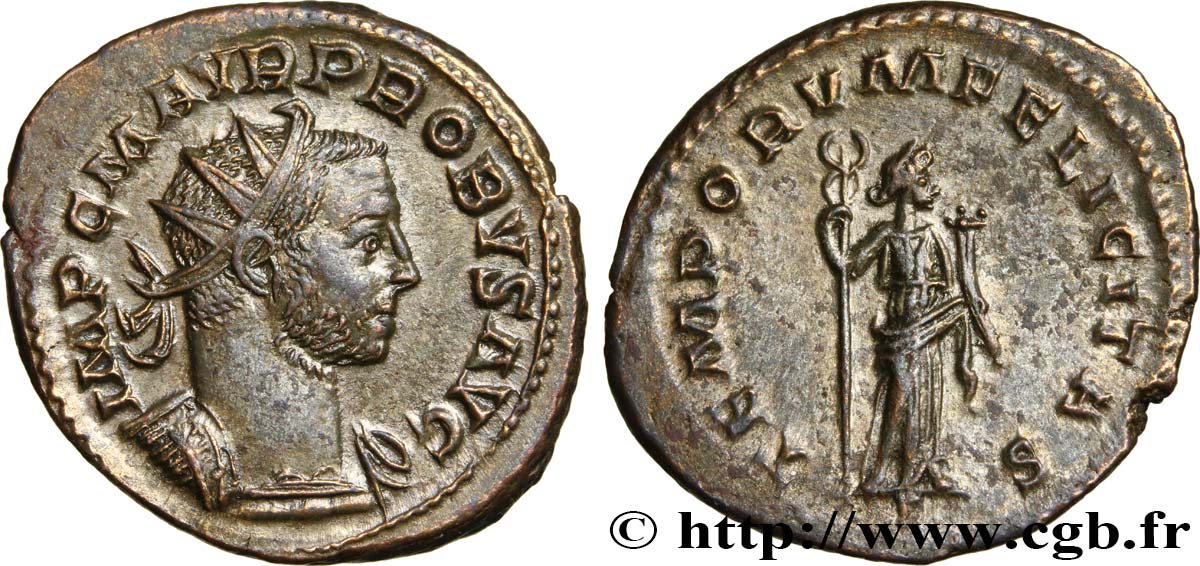
 Report a mistake
Report a mistake Print the page
Print the page Share my selection
Share my selection Ask a question
Ask a question Consign / sell
Consign / sell
 Full data
Full data